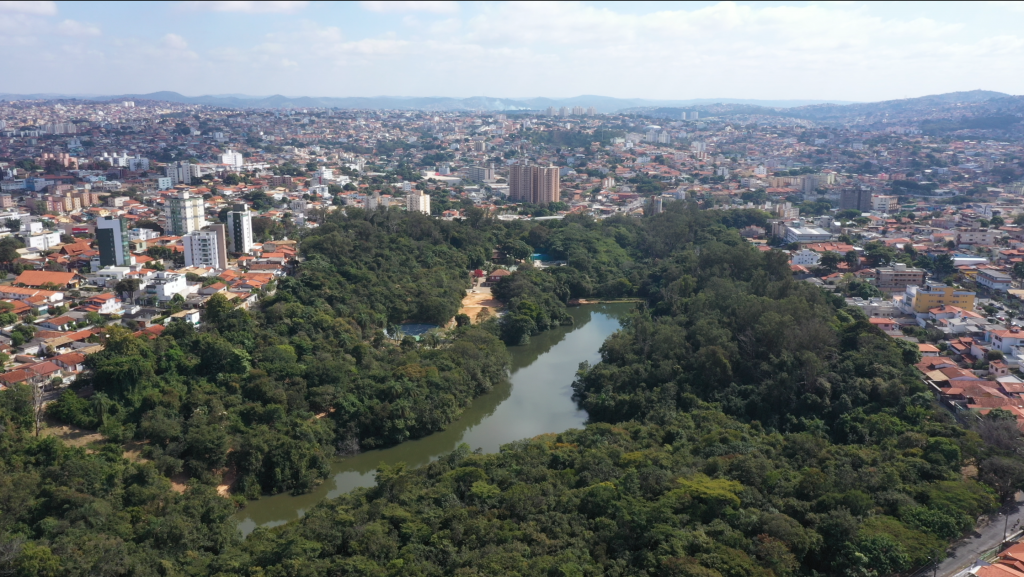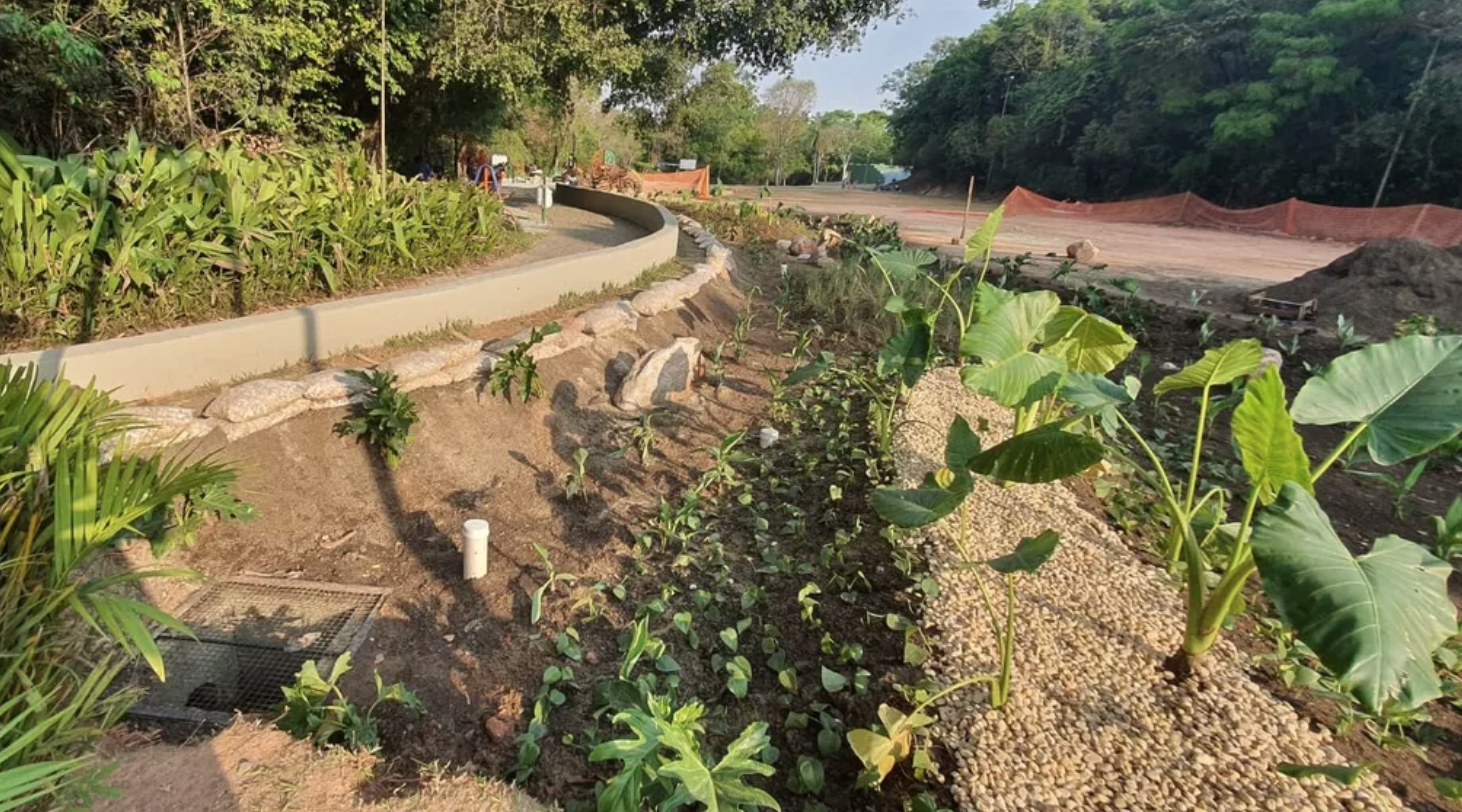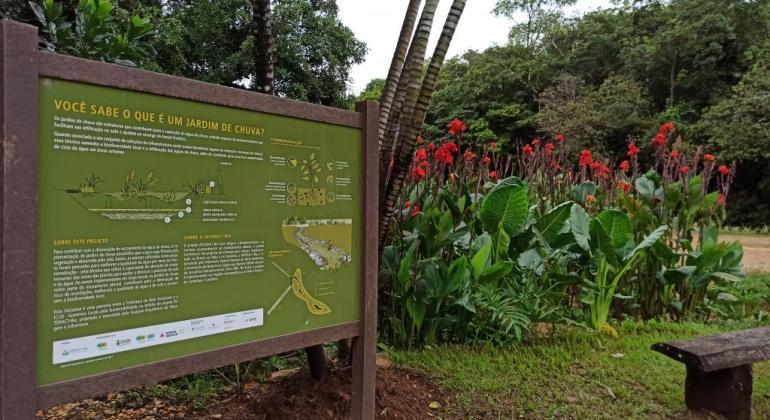A rain garden has been implemented at the Fazenda Lagoa do Nado Municipal Park in Belo Horizonte. The rain garden has been created as "a solution that contributes to the runoff of rainwater, allowing the water to be filtered through vegetation and infiltrate into the soil", with this type of solution being recognised as a method which "recharge[s] the water table, increases biodiversity, improves the local microclimate and air quality" (Ref. 1). The rain garden has been created as a demonstration project within the wider INTERACT-Bio project which is led by the global Local Governments for Sustainability network, ICLEI (International Council for Local Environmental Initiatives) (Ref. 1). As summarised by President of the Municipal Parks and Zoobotany Foundation of Belo Horizonte, Sérgio Augusto Domingues, “This is an important experiment that enables solutions based on nature. The idea is that it, like other mechanisms, complements macro-drainage interventions, helping the city to be more resilient to extreme events related to climate change" (Ref. 3). According to the Municipality of Belo Horizonte, the Multiannual Government Action Plan (PPAG) aims to implement 30 rain gardens in the municipality by 2025, each garden having an area of 150 square meters (Ref. 7).
Overview
Nature-based solution
- Blue infrastructure
- Lakes/ponds
- Green areas for water management
- Rain gardens
- Parks and urban forests
- Large urban parks or forests
Key challenges
- Climate action for adaptation, resilience and mitigation (SDG 13)
- Climate change adaptation
- Green space, habitats and biodiversity (SDG 15)
- Green space creation and/or management
- Water management (SDG 6)
- Flood protection
- Stormwater and rainfall management and storage
- Improvements to water quality
Focus
Project objectives
Implementation activities
Climate-focused activities
Climate change adaptation:
- Implement solutions to capture/store water to increase its availability and prevent shortages from droughts
- Implement sustainable urban drainage infrastructure (e.g. to make space for water)
Main beneficiaries
- Citizens or community groups
Governance
Management set-up
- Co-governance with government and non-government actors
Type of initiating organisation
- Local government/municipality
- Transnational network
Participatory approaches/ community involvement
- Unknown
Details on the roles of the organisations involved in the project
Project implemented in response to ...
Financing
Total cost
Source(s) of funding
- Multilateral funds/international funding
Type of funding
- Direct funding (grants, subsidies, or self-financed projects by private entities)
Non-financial contribution
Impacts and Monitoring
Environmental impacts
- Climate change
- Lowered local temperature
- Environmental quality
- Improved air quality
- Improved soil quality
- Water management and blue areas
- Improved water quality
- Increased protection against flooding
- Improved stormwater management
- Enhanced protection and restoration of freshwater ecosystems
- Green space and habitat
- Promotion of naturalistic styles of landscape design for urban development
- Increased number of species present
Economic impacts
- Other
Socio-cultural impacts
- Education
- Increased awareness of NBS and their benefits
- Safety
- Improved community safety to climate-related hazards
Type of reported impacts
Presence of formal monitoring system
Presence of indicators used in reporting
Presence of monitoring/ evaluation reports
Availability of a web-based monitoring tool
References
2. Prefeitura Belo Horizonte (2022). Prefeitura inaugura Jardim de Chuva no Parque Municipal Fazenda Lagoa do Nado (City Hall opens Rain Garden at Fazenda Lagoa do Nado Municipal Park). Belo Horizonte: Prefeitura Belo Horizonte. Source link
3. O Tempo (2022). Parque Lagoa do Nado ganha jardim que capta e armazena água da chuva (Lagoa do Nado Park has a garden that captures and stores rainwater). Contagem: O Tempo. Source link
4. Araújo, W. (2021). Parque Lagoa do Nado ganha Jardim de Chuva com investimento alemão (Lagoa do Nado Park wins Rain Garden with German investment). Belo Horizonte: Notre Livre. Source link
5. Pampulha Lagoon (2021). O Parque Municipal Fazendo Lagoa do Nada esta com projeto piloto de Jardim de Chuva (The Municipal Park Fazer Lagoa do Nada has a pilot project for a Rain Garden). Belo Horizonte: Pampulha Lagoon. Source link
6. Pampulha Lagoon (2022). Jardim de Chuva do Parque Municipal Fazenda Lagoa do Nado é inaugurado (The Rain Garden at Fazenda Lagoa do Nado Municipal Park opens). Belo Horizonte: Pampulha Lagoon. Source link
7. Mansur, R (2021). Iniciativa contra enchentes, jardins de chuva serão concluídos nesta semana em BH e Contagem (Initiative against floods, rain gardens will be completed this week in BH and Contagem). Belo Horizonte: Globo Comunicação e Participações. Source link.



